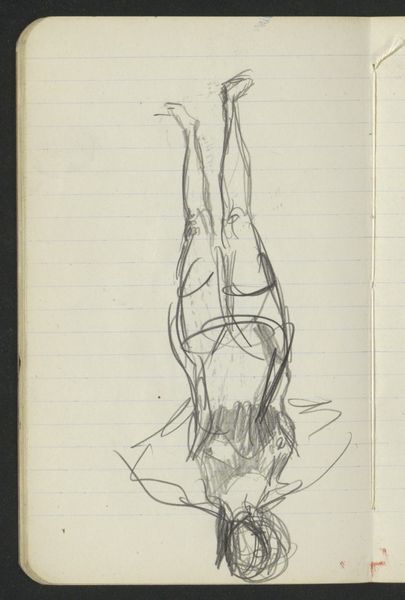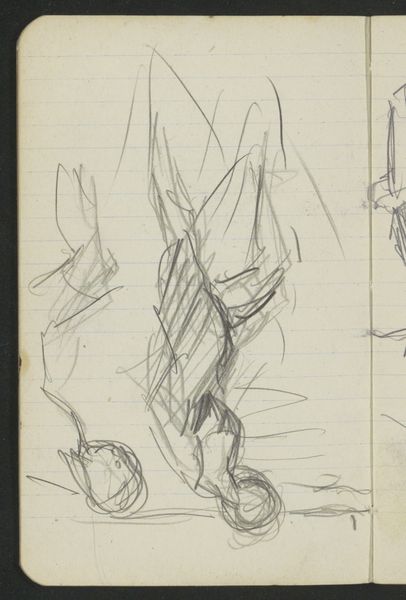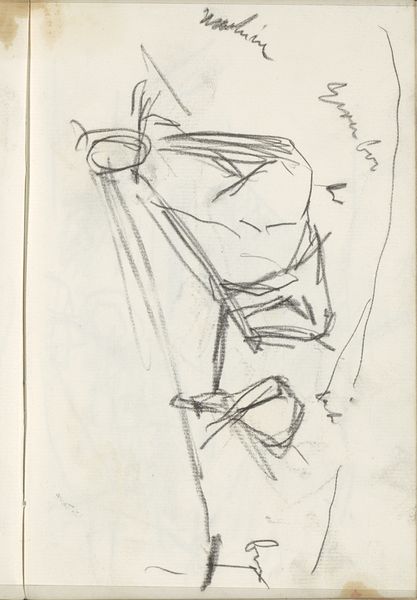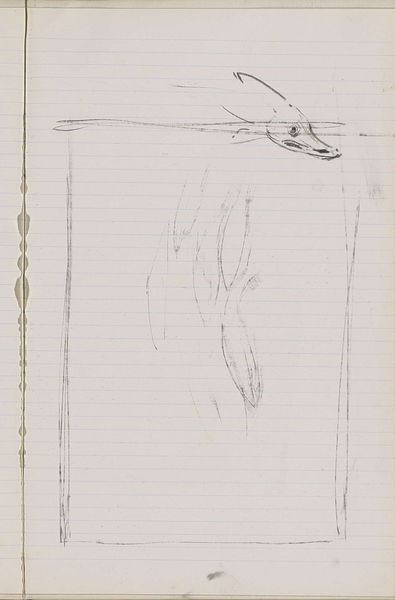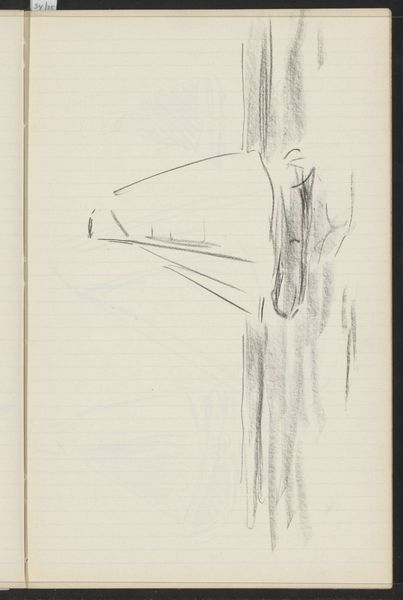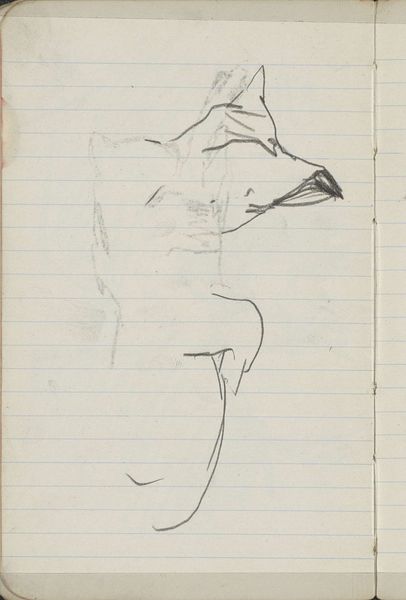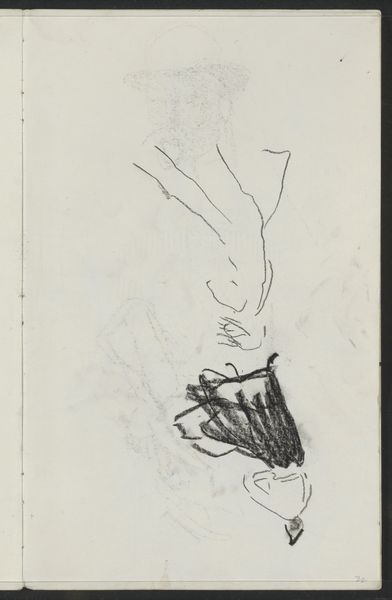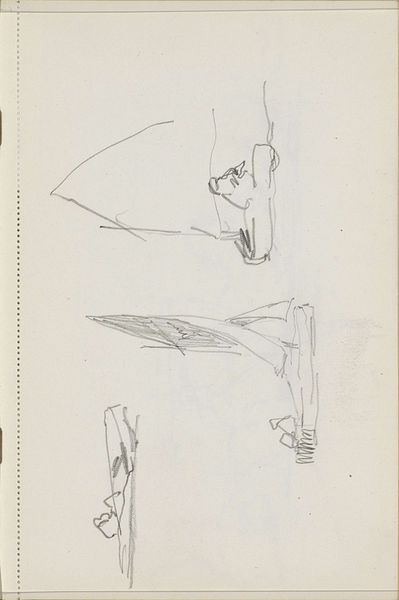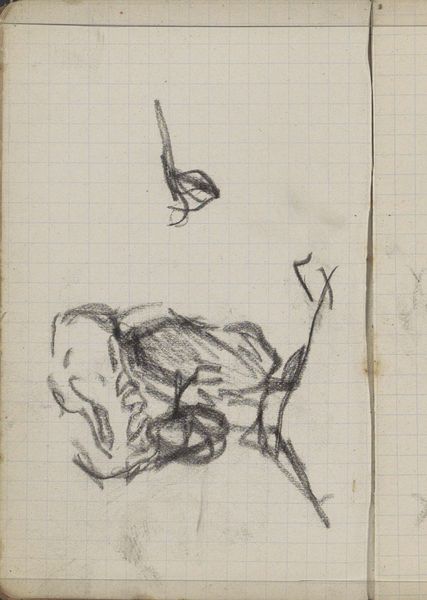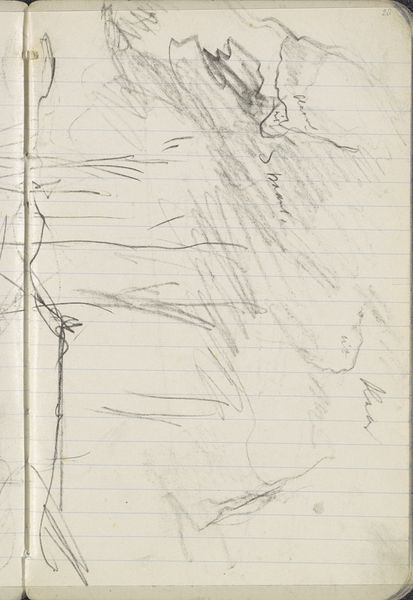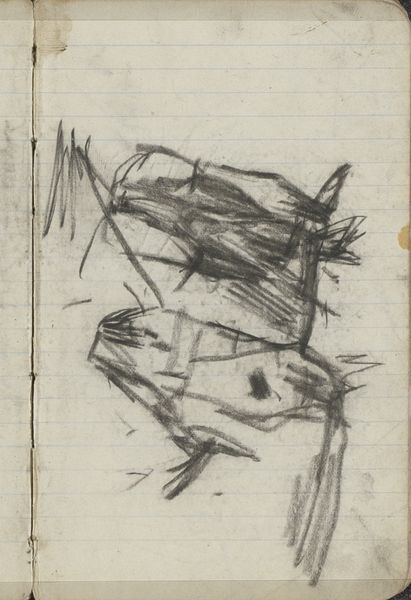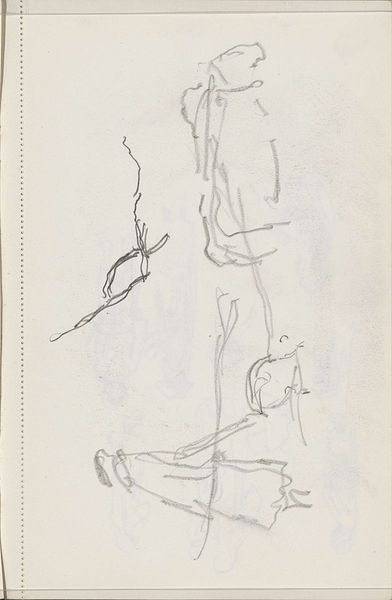
drawing, pencil
#
portrait
#
drawing
#
imaginative character sketch
#
quirky sketch
#
pen sketch
#
figuration
#
personal sketchbook
#
ink drawing experimentation
#
pen-ink sketch
#
pencil
#
sketchbook drawing
#
sketchbook art
#
fantasy sketch
#
initial sketch
Copyright: Rijks Museum: Open Domain
Curator: Isaac Israels' "Standing Woman with Cape," which likely dates from between 1875 and 1934, is now housed at the Rijksmuseum. It seems to be executed in pencil and pen, capturing a figure in rapid strokes. Editor: There's an immediacy here. The tilted orientation gives a playful, almost dreamlike quality. The lines are searching, and the woman feels suspended, maybe uncertain? Curator: Absolutely. Look closely at the layered strokes— the way the cape's fabric is suggested rather than defined, created through simple hatching. Consider the book it is drawn into—was it a mass-produced sketchbook? Were those lines originally intended for writing? This suggests that the making of the image itself occurred during the making of something else; the raw immediacy that the materials and form bring forward really speak of an intimate exchange. Editor: Intimate, yes, and I am seeing something in her cape, the almost wing-like structure combined with her downward gaze suggest melancholy. The sketch offers glimpses into personal themes of societal expectations of women through the symbol of being ‘weighed down’, if we see the cape more literally, or one where a symbolic gesture towards finding freedom in flight, but it is flight away from somewhere and not towards somewhere. Curator: I agree about freedom, though her cape might be less of an active, symbolic weight and more a symbol of mass textile manufacturing, one in which someone labored to make it, either the wearer, or more likely, for the wearer, which brings forward a societal complexity where one profits off of someone else’s suffering, labor or both. I would also look at what paper products and the production meant during this time. These are very deliberate processes. Editor: That’s an interesting consideration of the labour associated to the raw materials in a much wider system, especially when brought into context with clothing. However, considering the drawing style and figure placement withing the notebook context and linework—I can not but associate it with someone's introspective moment in search for something they did not quite locate—lost hope even. Curator: And hope, like so many resources in that period, came at such a heavy price. Editor: A heavy price, indeed, that's reflected both symbolically and, as you mentioned, literally, within its mode of production.
Comments
No comments
Be the first to comment and join the conversation on the ultimate creative platform.
